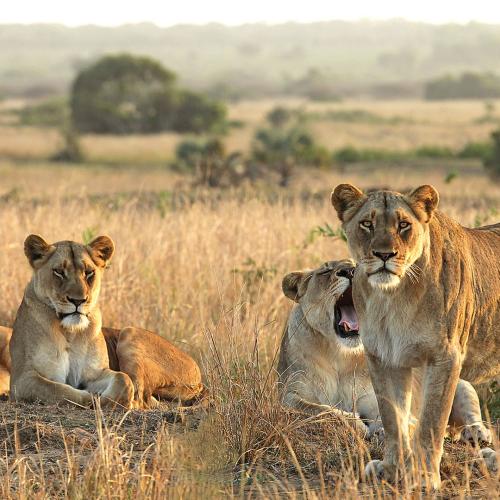2-Day Fly in &Fly out from Zanzibar Tarangire and Crater
Tour Overview
You'll witness the elephants and ancient baobab trees of Tarangire and search for the elusive Big Five in the Ngorongoro Crater. You will enjoy sundowners by the campfire and dinner under the African sky, you will stay in midrange lodge. Your tour will start in Zanzibar and end in Zanzibar.
Tour Duration
2 DaysTour Plan
You'll drive to Tarangire National Park, one of Africa’s little-known gems, and should be on the itinerary of all lovers of wilderness and solitude.
Tarangire’s landscape is incredibly diverse. It is dotted with ancient baobab trees and large termite mounds. The dry season sees the harsh sun suck the moisture from the landscape, baking the earth a dusty red while the wet season brings dense bush and luscious high grasses.
Famous for its large elephant population, it is also home to zebras, wildebeests, giraffes, waterbucks, baboons, dwarf mongoose, impalas, buffalos, antelopes, and fringe-eared oryx. Predators include lions, cheetahs, and leopards.
The Crater is famous for Africa’s best wildlife viewing as there is an ever-present abundance of wildlife due to the permanent water supply on the crater floor. You will descend 610 meters into the Crater where your safari truly begins. You'll spot the endangered black rhinos, wildebeests, buffalos, zebras, elands, Grant’s and Thomson’s gazelles, giant tusked elephants plus lions, leopards, cheetahs as well as scavengers such as spotted hyenas, jackals, and wild dogs. Over 500 species of birds have been recorded within the Ngorongoro Conservation Area.
Included/Exclude
Park fees (For non-residents)
All activities (Unless labeled as optional)
All accommodation (Unless listed as upgrade)
A professional driver/guide
All transportation (Unless labeled as optional)
All Taxes/VAT
Roundtrip airport transfer
Meals (As specified)
Drinks (As specified in the day-by-day section)
International flights (From/to home)
Additional accommodation before and at the end of the tour
Tips (Tipping guideline US$10.00 pp per day)
Personal items (Souvenirs, travel insurance, visa fees, etc.)
Government imposed increase of taxes and/or park fee


